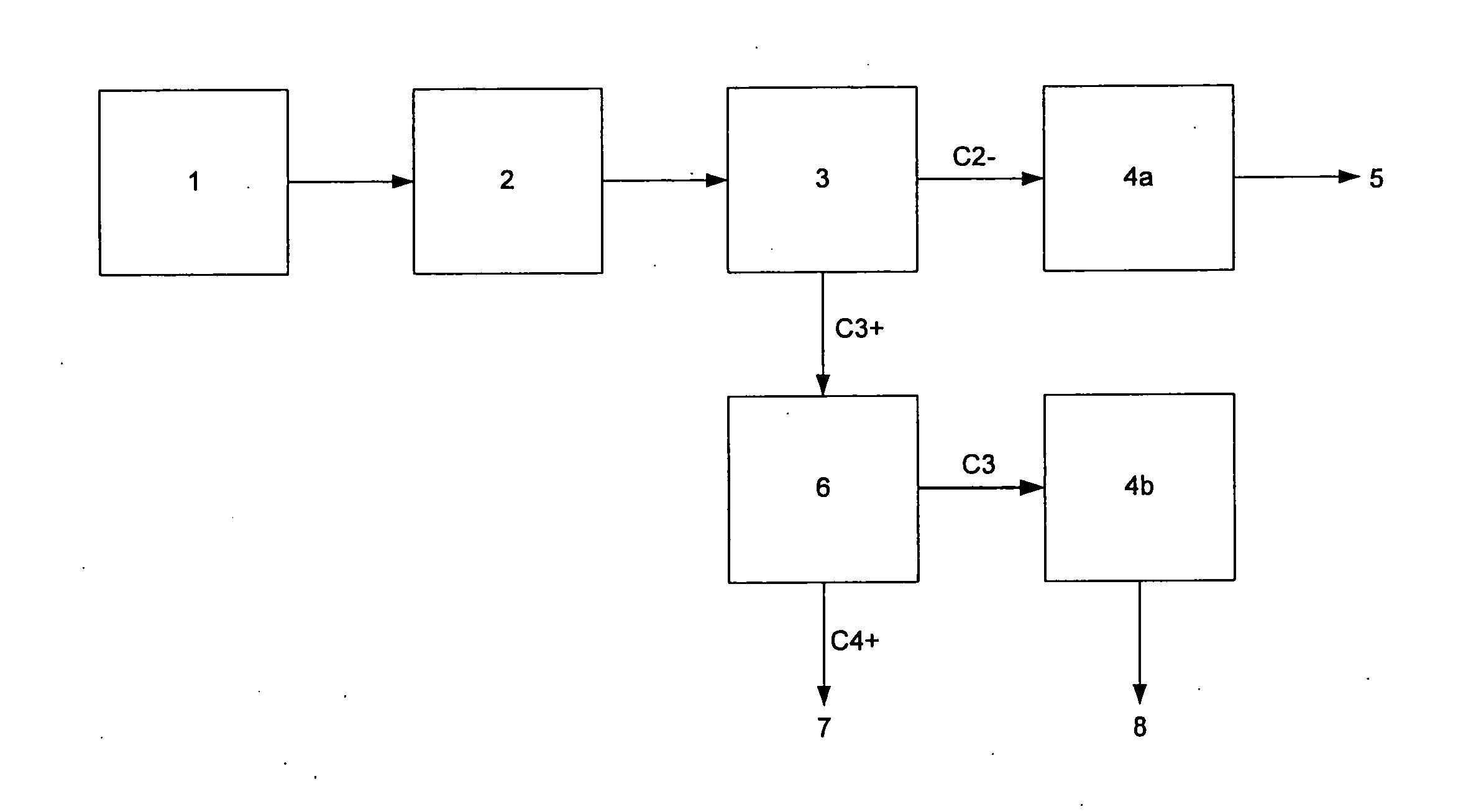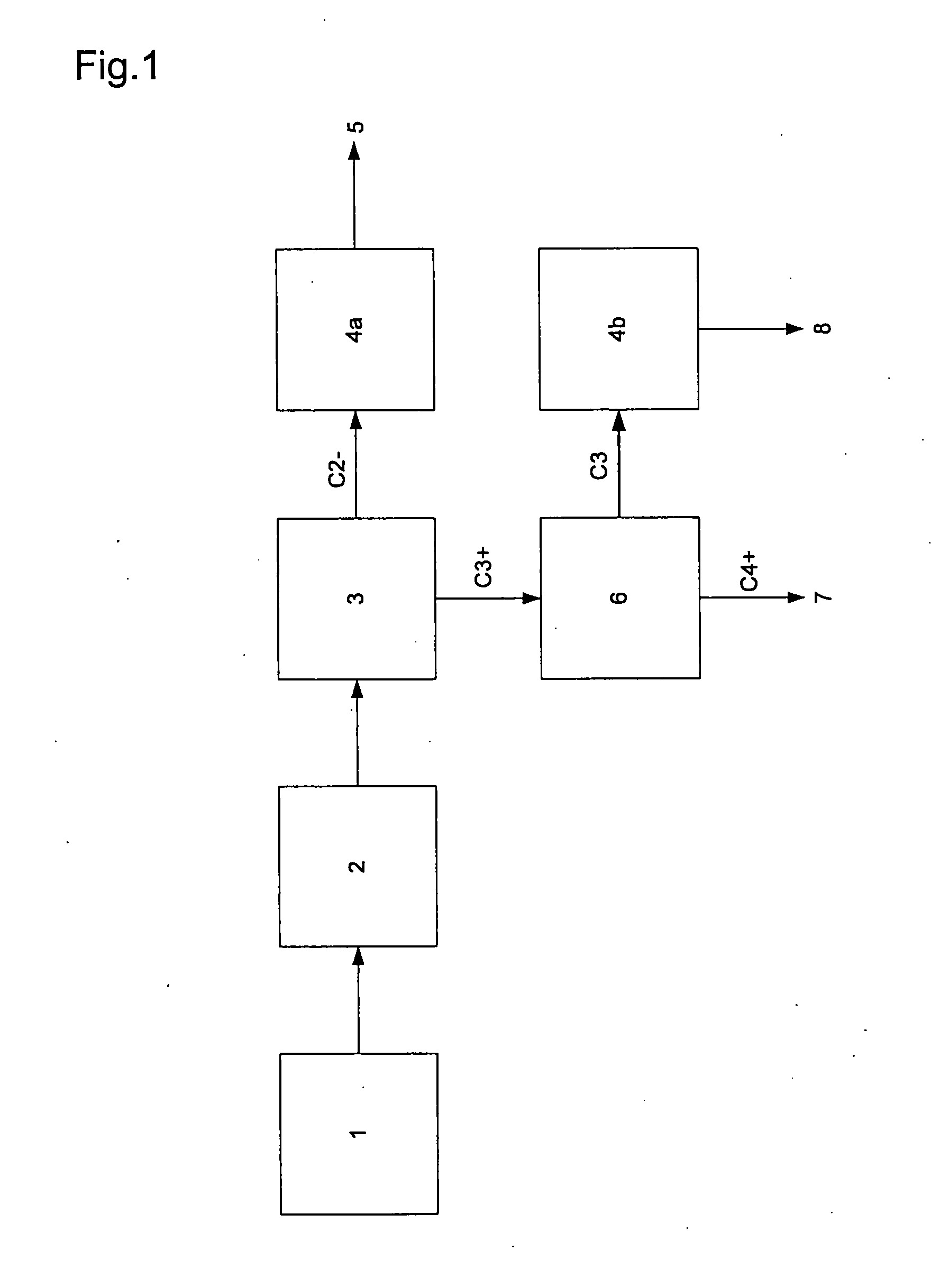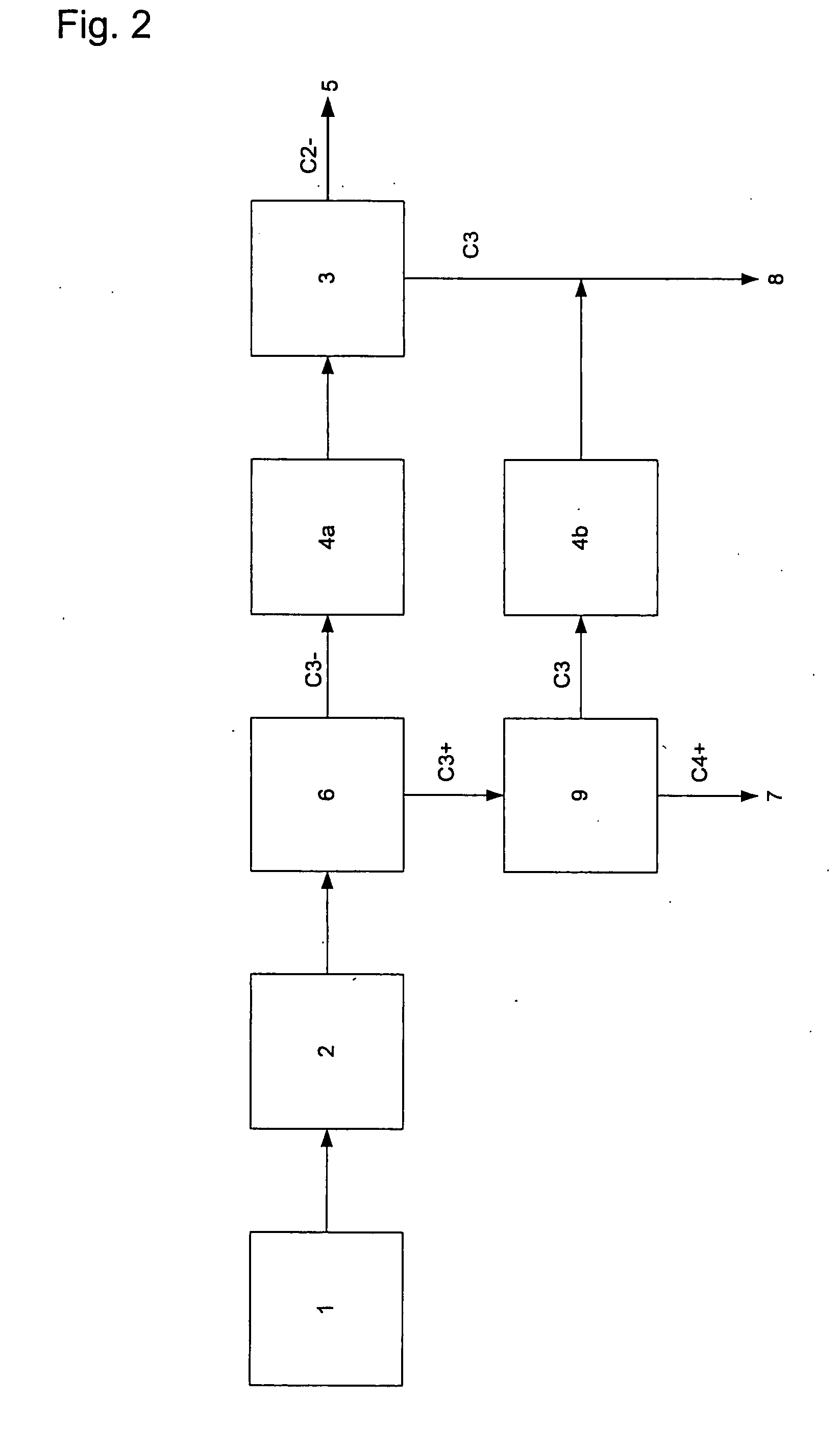Method for separation of olefins
- Summary
- Abstract
- Description
- Claims
- Application Information
AI Technical Summary
Benefits of technology
Problems solved by technology
Method used
Image
Examples
Example
DETAILED DESCRIPTION OF THE DRAWINGS
[0019] The separation sequence of the prior art shown in FIG. 1 starts with the crude gas compression (1) with subsequent precooling and drying (2). The precooled and dried crude gas is separated in a C2 / C3 separation (3) into olefins having at most two carbon atoms (C2−) and olefins having at least three carbon atoms (C3+). The olefin fraction having at most two carbon atoms is catalytically hydrogenated (4a) and passed onto the low-temperature part (5). The olefin fraction having at least three carbon atoms (C3+) is separated with pressure reduction in a C3 / C4 separation (6) into a fraction having three carbon atoms (C3) and a fraction having at least four carbon atoms (C4+). The olefin fraction having four carbon atoms is supplied to further processing (7), while the fraction having three carbon atoms (C3) is catalytically hydrogenated in a second reactor (4b) and passed out (8).
[0020]FIG. 2 shows a variant of the prior art in which the preco...
PUM
| Property | Measurement | Unit |
|---|---|---|
| Pressure | aaaaa | aaaaa |
| Fraction | aaaaa | aaaaa |
Abstract
Description
Claims
Application Information
 Login to View More
Login to View More - R&D
- Intellectual Property
- Life Sciences
- Materials
- Tech Scout
- Unparalleled Data Quality
- Higher Quality Content
- 60% Fewer Hallucinations
Browse by: Latest US Patents, China's latest patents, Technical Efficacy Thesaurus, Application Domain, Technology Topic, Popular Technical Reports.
© 2025 PatSnap. All rights reserved.Legal|Privacy policy|Modern Slavery Act Transparency Statement|Sitemap|About US| Contact US: help@patsnap.com



